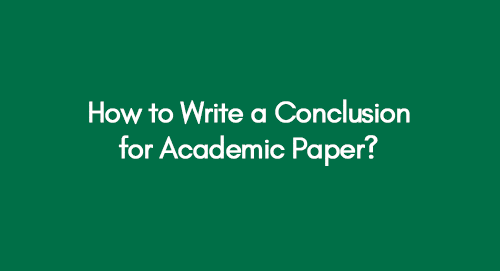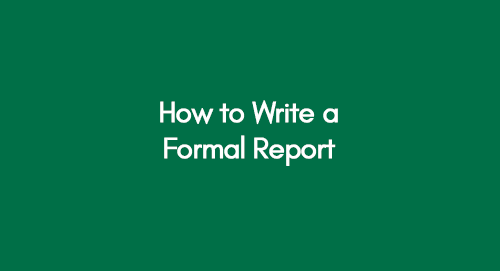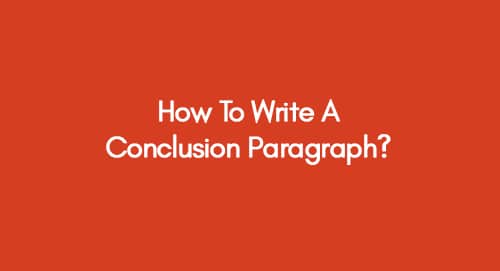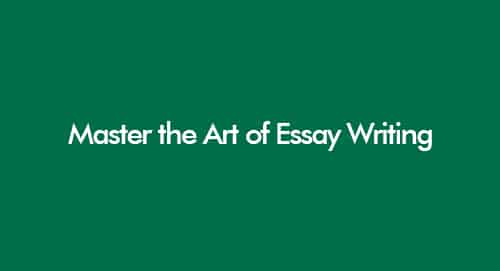
How to Write a Conclusion for Academic Paper | Insider Advice and Explanation
October 14, 2022
How to Write a Formal Report that Stands Out? | Best Practical Tips
October 17, 2022A concluding paragraph is an essential part of any formal piece of writing, providing readers with a sense of closure and leaving a lasting impression.
Explore Current Dissertation Topics Here
A great conclusion paragraph summarizes the main points of your paper, essay, or report. It aims to connect the summary points to the main thesis or argument and leave your reader with an interesting last impression. You can captivate your readers by understanding how to write a conclusion paragraph while using powerful verbs, nouns, and adjectives.
Find out Practical Strategies to Write A Good Conclusion
What is a Conclusion?
A conclusion is an essential part of academic writing, providing a summary and analysis of the main points of an argument. To conclude, writers must draw on evidence from their paper, synthesizing information and drawing connections between ideas.
Additionally, conclusions typically involve some degree of interpretation or evaluation as writers offer their perspectives on the relevance and significance of their argument. Overall, a conclusion aims to help readers understand the key takeaways from a piece of writing and come away feeling that they have gained new knowledge or insight into a topic.
The Main Purpose of a Conclusion in an Academic Writing
An academic piece is usually a detailed and technical piece with several sections. The conclusion aims to wrap up the study in limited words. A conclusion will serve the following purposes:
Find Expert Help on Assignment Writing Services
- It offers a sense of closure for the reader.
- Reinforces the main arguments and key findings from the body text, allowing readers to reflect on the presented facts and draw their own conclusion.
- It is an opportunity for students to make recommendations for future research.
- Empowers students to explore various implications of the topic.
- You can demonstrate your understanding of the material and engage with your readers meaningfully.
What is the Difference Between a Conclusion and a Summary?
The key difference between a conclusion and a summary lies in their purpose and content. A summary provides a concise overview of the main points, ideas, and findings presented in a larger piece of work, such as an article, essay, or report. It condenses the essential information and provides a brief snapshot of the entire document without offering any new analysis or interpretation.
On the other hand, a conclusion serves as the final section of a piece of writing, such as a research paper or essay. It goes beyond summarizing the main points and offers a synthesis of the findings, analysis, and arguments presented throughout the work. A conclusion often includes a restatement of the thesis or research question, a summary of the main findings or key arguments, and a broader reflection or implications of the work. It aims to provide closure and leave a lasting impression on the reader by drawing together the main ideas and offering a thoughtful interpretation or evaluation of the work.
Find Extraordinary Examples of Writing a Dissertation
In short, while a summary provides a concise overview of the main points and findings, a conclusion offers a more comprehensive synthesis and interpretation of the entire piece of writing, providing a sense of closure and leaving the reader with a final impression or takeaway.
How to Write a Strong Conclusion?
1. Restate the Thesis
At the start of your conclusion, establish the connection with your main research question or thesis statement. It will allow you to remind your readers about the key highlights of your paper, essay or report.
2. Summarize the Main Points
The next step is to summarize the main points, key findings, distinct results, and methods you leveraged. This will help reinforce the key ideas and provide a sense of closure.
3. Address Any Counterarguments
Don't be shy to take the counterargument head-on. If you have used counter-narratives in the body text, then highlighting, in conclusion, is vital to give your readers a holistic view of the research. This will show that you are aware of opposing viewpoints and thoughtfully considers them.
4. Offer a Solution or Call to Action
Sometimes, offering an appropriate solution or call to action is essential while concluding.
For example, if your paper discusses a problem such as climate change, the conclusion could include a proposal for how to address this issue.
Explore Some Recent Topics for a Dissertation on Climate Change Here
5. End with a strong statement
The conclusion should end with a strong statement that leaves a lasting impression on the reader. It could be a powerful quote, an interesting statistic, or anything else that will stick in the reader's mind long after reading.
Here are Two Bonus Tips to Give Your Conclusion a Five-Star Rating
Bonus Tip 1: Start with a strong sentence
The best way to start your conclusion is with a strong sentence that restates your main argument. This will remind the reader of what they have just read and help to drive home your point.
Bonus Tip 2: Use transitional words
Transitional words and phrases are powerful tools to signal to the reader that you are moving from one point to another. Some examples of transitional words and phrases involve "in conclusion," "finally," "in summary," and "to sum up."
For example: "To sum up, the impact of CO2 emission has caused the global temperature to rise by X degree Celsius."
Conclusion
Finally, let's conclude the blog with practical and concise tips
- Restate the main points of your argument.
- Summarize the supporting evidence you have provided.
- Explain how your argument has addressed the counterarguments of your opponents.
- Call for action or further study on the issue at hand.
- End with a strong statement that leaves the reader with a clear understanding of your position on the issue.
In conclusion, it is essential to reiterate the main points of your paper and connect them to your thesis. Your concluding paragraph should leave your reader with a strong and lasting impression using powerful verbs, nouns, and adjectives.
Learn more about how to how to write a conclusion paragraph;
- Ten Things to Include in a Presentation-Worthy Report Conclusion
- Practical Strategies to Write A Good Conclusion
- How to Write a Conclusion for Academic Paper
- How to Write a Dissertation Conclusion?
- Wrapping up Your Dissertation: Create a Realistic Timeline for Completing Your Dissertation Conclusion
Contact Premier Dissertations to help craft the perfect conclusion paragraph for your next academic paper.
Get 3+ Free Dissertation Topics within 24 hours?



























